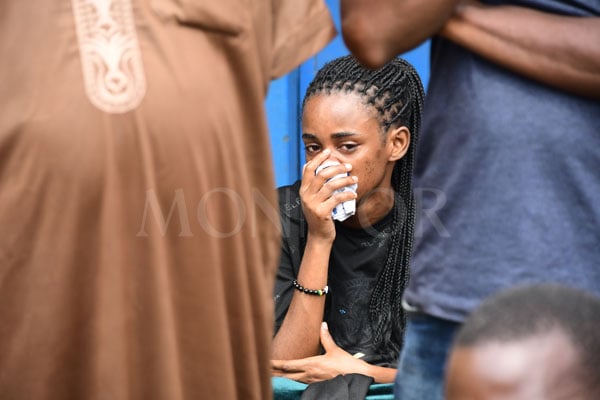Sick children: Why Oyam is educationally disadvantaged

Pupils attend lessons at Acimi Primary School in Oyam District on June 8, 2022. Hundreds of school-age children are out of school due to health issues. PHOTO | BILL OKETCH
What you need to know:
- These findings undermine the United Nations Sustainable Development Goal 4, which aims for inclusive and equitable quality education for all by 2030.
Hundreds of children suffering from health issues are completely missing out on education in Oyam District, according to a new study.
Children with health challenges account for 33 percent of those not enrolled in school, with girls disproportionately affected, as highlighted in the September 2024 Household Baseline Survey report. The analysis reveals that 64 percent of girls in Iceme and Loro sub-counties are out of school.
The Foundation for Inclusive Community Help (FICH), a grassroots organization that conducted the study, emphasizes that providing essential scholastic materials—such as books, pens, calculators, and uniforms—must be prioritized to ensure children can attend school.
“Out of the 460 households interviewed, 165 had children who should be in school but are not,” said Denis Opio, the FICH’s monitoring and evaluation officer, in a telephone interview on Thursday. “The survey conclusively identifies sickness as the primary reason for school absenteeism.”
Additionally, Mr Opio noted that inadequate scholastic materials account for 23 percent of the reasons for missing school, while financial barriers represent 13 percent. Twelve percent cited uniform issues, and 8 percent reported that they were unable to attend school due to caregiving responsibilities.
These findings undermine the United Nations Sustainable Development Goal 4, which aims for inclusive and equitable quality education for all by 2030.
Mr Nicholas Opio Awelo, the Iceme LC3 chairman, acknowledged that the study reflects the stark realities on the ground. “As parents, we recognize our roles and responsibilities, yet some cannot grasp the value of education,” he remarked during the report's presentation at the Karacel Community Development Centre, Akongatar Village, Angweta Parish in Iceme Sub-county on October 23, 2024.
“Each stakeholder must hold one another accountable; if teachers lack motivation and headteachers do not supervise effectively, educational outcomes will inevitably suffer,” he added.
Mr Daniel Okello, the acting chairperson of the Education and Health Committee in Oyam, suggested that if parents collaborated to build more classrooms, it would significantly alleviate the issue of inadequate learning spaces.
“Historically, government initiatives have had minimal impact in schools. Most existing classroom walls are the result of parental initiative,” he stated.
Ms Connie Atoo, the Oyam chairperson for Finance, Planning, and Administration, noted the lack of oversight in schools. “During my visit to Lela Olok Primary School last year, I discovered that no inspector had visited in a decade, and there was not a single female teacher at the school.”
Mr Benson Ongom, the acting District Education Officer and Oyam District inspector of schools, highlighted critical issues affecting education in the region. “Our desk-to-pupil ratio is 1:9—one desk for nine children—while the standard is 1:3. Teachers in Oyam often handle over 150 learners per class, far exceeding the recommended maximum of 53.”
He stressed the importance of community involvement in driving educational improvement. “If we want to enhance educational standards, we must engage parents as active participants in this process. Change should start with each individual present today.”
Oyam District is home to 109 government primary schools, underscoring the need for concerted efforts to address these pressing challenges.




